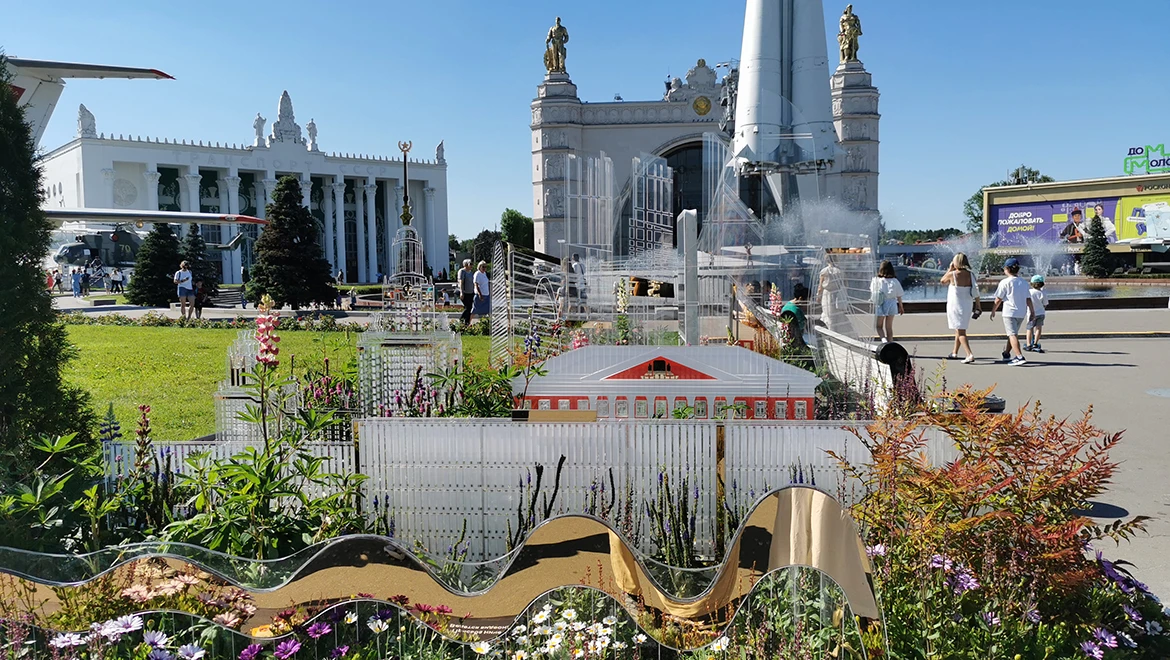Chamomile. Voronezh region
Chamomile, symbolizing tenderness
and beauty, finds a special place in the hearts of the inhabitants of the
Voronezh region.
Chamomile (Matricaria chamomilla)
is an annual plant of the Asteraceae family. It is characterized by cultivation
both for decorative and medicinal purposes. In the Voronezh region, it grows in
the wild, but is also actively cultivated in personal and commercial farms.
In medicine, chamomile is used to
treat gastritis, colitis, stomach ulcers, dysentery, liver diseases, kidney,
bladder, nervous system. Chamomile is used for malaria, insomnia, colds,
scrofula. Chamomile relieves spasms of the stomach and intestines, has a
beneficial effect on the condition of mucous membranes, helps with ulcers,
boils, gout, eczema, toothache, migraine, bruises. Flowers of chamomile are
used to prepare infusions, decoctions, lotions, teas.
During the blooming season, which
lasts from May to June, the fields and meadows of the region are covered with a
snow-white carpet of chamomile, attracting tourists and artists.
Chamomile is closely linked to
local culture and traditions. It is often used as a decoration for national
holidays and is a popular gift for women on Family, Love and Fidelity Day and
the official symbol of the holiday. Chamomile tea epitomizes hospitality in the
homes of the Voronezh region.
According to a local legend, there
lived a kind forest fairy. When she appeared, flowers bloomed, trees turned
green, and withered plants came to life. Once she saw a young shepherd in the
meadow and fell in love with him. The fairy revealed to the shepherd the
secrets of healing, the properties of herbs and flowers, and he began to heal
people. But the shepherd took money for his help, he became rich and completely
forgot his beloved. And the beautiful fairy was still waiting for him in the
meadow and cried from grief. Where her tears fell, chamomile plants grew.
Chamomile flowers grow and drop their tears: loves me - loves me not, will come
- will not come. People come to the chamomile, asking for help, and flowers,
feeling people's pain, help those who are pure in heart and soul. But the
shepherd lost his gift with every tear, and strength and luck left him. The
shepherd remembered about the forest fairy, ran to the cherished meadow, and
there was only a chamomile field.
Another, this time a real story,
connects Voronezh with chamomile. As you know, tuberculosis in
pre-revolutionary Russia, especially among children, was recognized as a
national scourge. However, the tsar's government did not allocate any funds to
fight it. Funds for this fight were drawn exclusively from voluntary donations
during the so-called White Chamomile Days. This was the prototype of the
current White Flower Day. The base center of this event was usually the city
garden, and bouquets of chamomile, white ribbons with the inscription "Fight
against Consumption" and a mug for collecting donations were invariable
attributes of the holiday.
The famous Voronezh architect,
Professor N.V. Troitsky and his son recalled how this charity event was held: "Another memorable event - White Flower Day - is connected with the city
garden".
The most famous people in Voronezh
joined the League to Fight Tuberculosis: doctors A.H. Sabinin and K.V.
Fedyaevsky, V.I. Kolyubakin and V.A. Goldenberg, E.F. Veretennikova and F.I.
Khrushchov. Dozens of activists took the initiative to raise money for the
terrible disease.
Chamomile in Voronezh region is not
just a plant, but a part of cultural and economic heritage. This flower remains
an important symbol in the life of the region, a carrier of historical and
cultural meanings.
Along with the RUSSIA EXPO, the flower festival is also coming to an end.
The "Future in Flowers" festival continues at the RUSSIA EXPO, where unique flowerbeds from all regions of our country can be seen at the "Space" pavilion until July 8.
The RUSSIA EXPO concludes on July 8, and with it, the flower festival will also come to an end.





